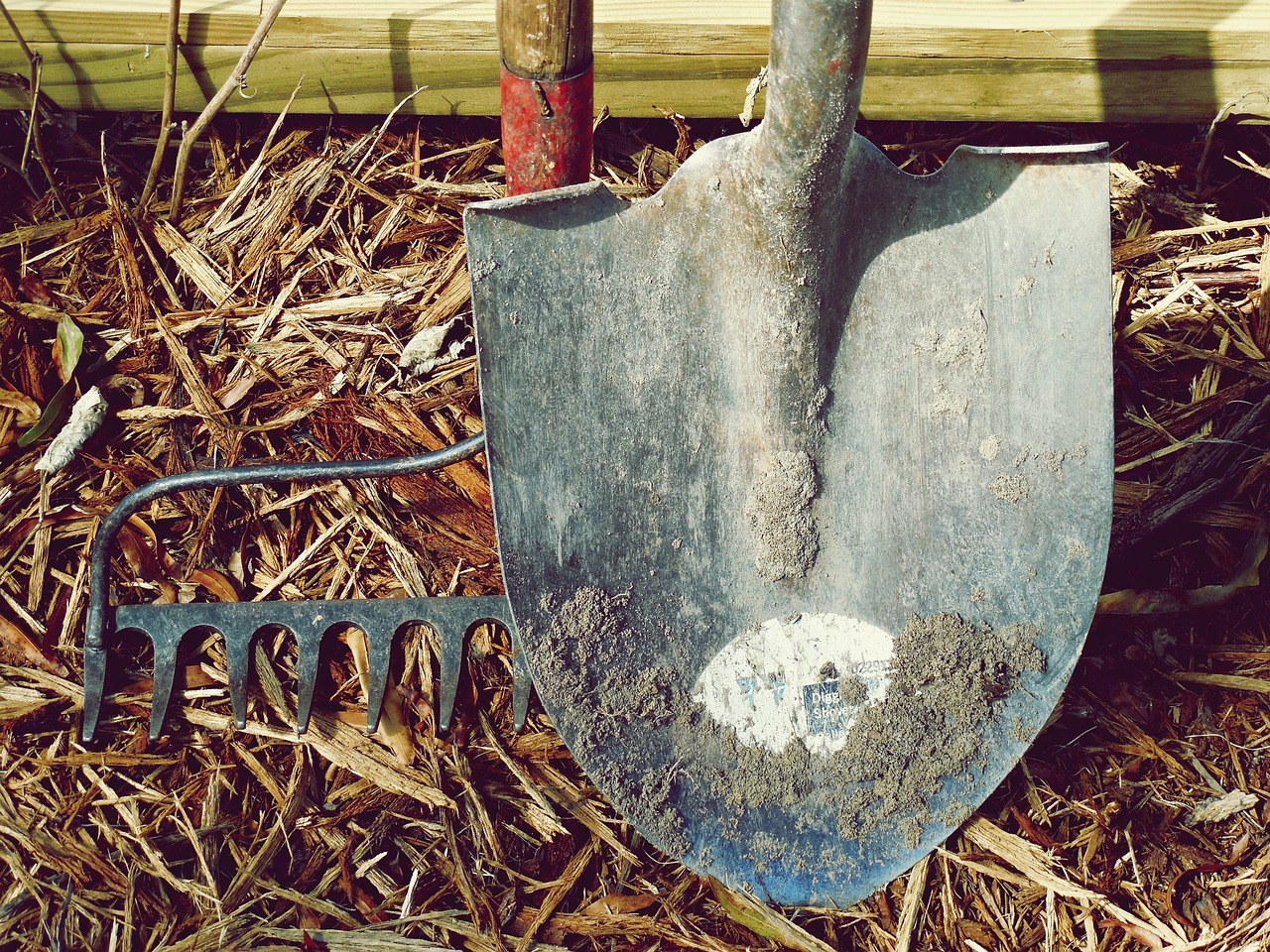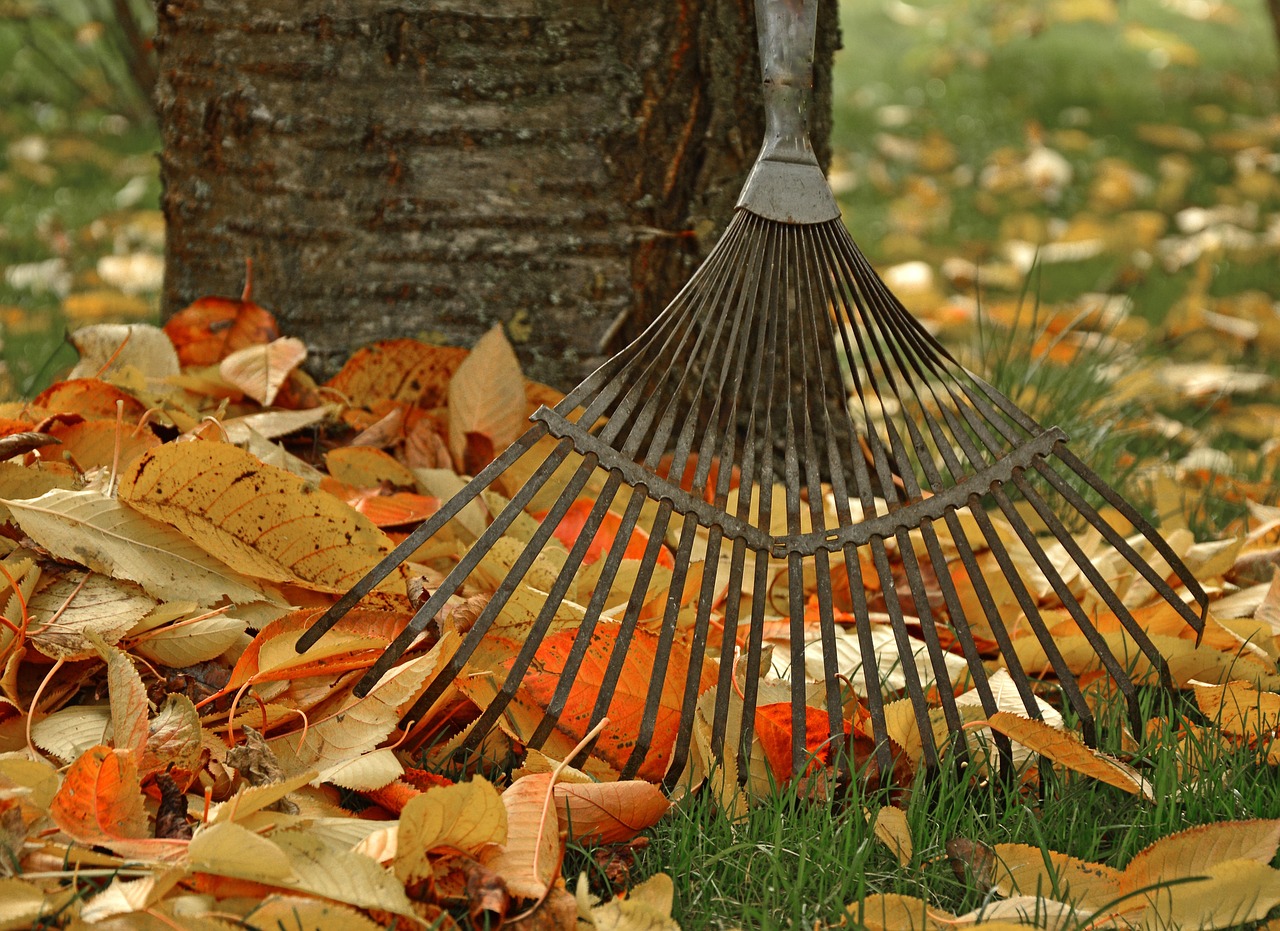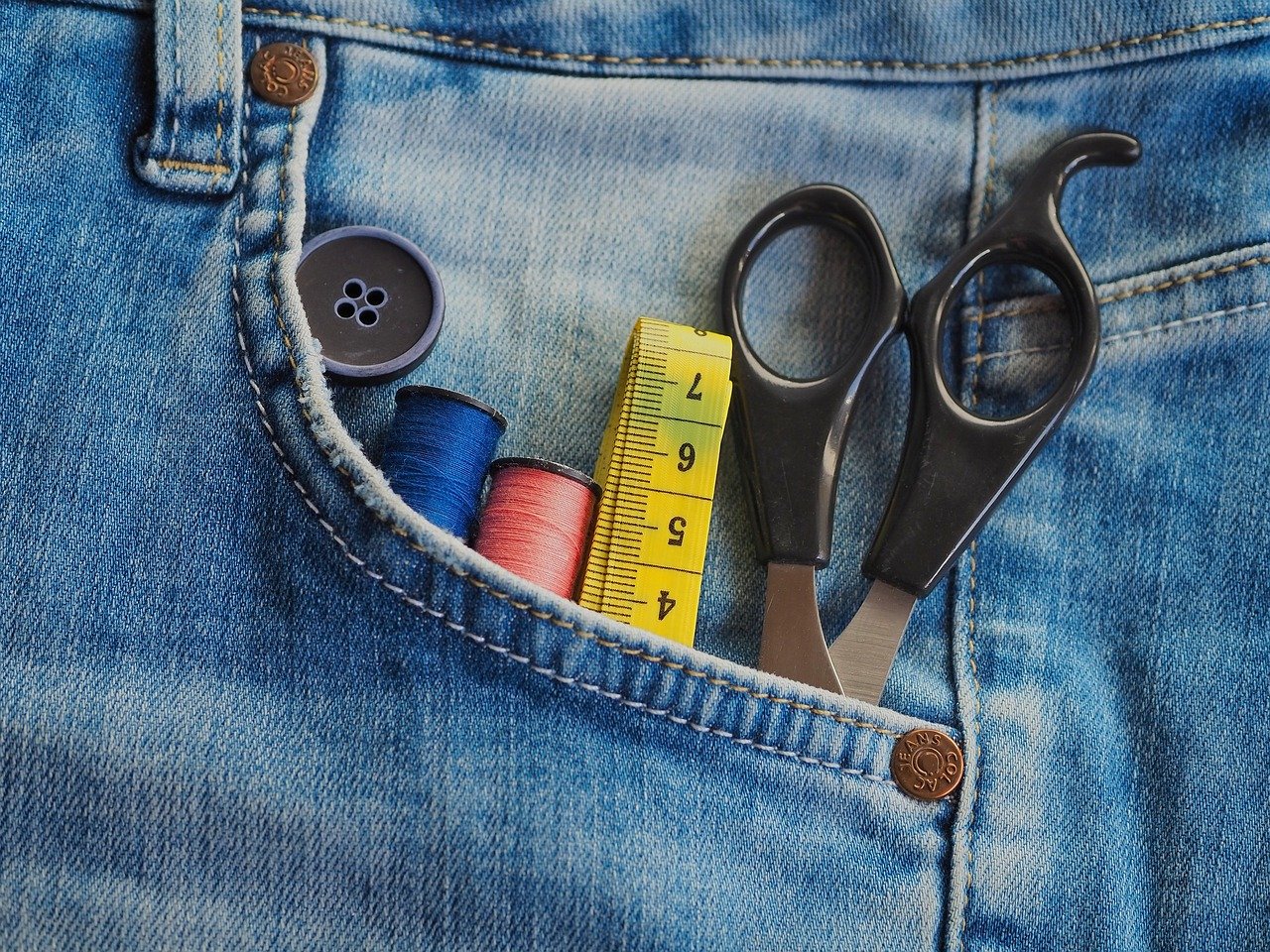Choosing the right tools for fall gardening is essential for maintaining a healthy garden. Key tools like leaf blowers, pruners, and tillers help manage seasonal tasks efficiently. Selecting durable and efficient options will make your gardening experience more enjoyable and productive.
Understanding Fall Gardening Needs

As summer fades and autumn approaches, gardeners face unique challenges. Leaves begin to fall, plants start to die back, and the ground may harden with cooler temperatures. Preparing your garden for winter is not just about aesthetics; it is a vital step in ensuring a successful growing season in the spring. To tackle these seasonal tasks effectively, specific tools become essential.
Each tool serves a distinct purpose, whether it’s clearing debris, pruning plants, or preparing soil. As you consider your fall gardening toolkit, it is important to evaluate which tools are necessary based on your specific garden size and types of plants. Investing in high-quality tools can save time and effort, ultimately making your gardening tasks easier and more enjoyable.
Essential Tools for Fall Gardening
When gearing up for fall gardening, there are several key tools that you should consider adding to your collection. Below is a list of essential tools along with their primary functions:
- Leaf Blower: Efficiently clears fallen leaves from pathways and garden beds.
- Pruning Shears: Ideal for trimming back perennials and dead branches.
- Tiller: Prepares soil for planting by breaking up compacted earth.
- Garden Rake: Helps level soil and collect leaves or debris.
- Hand Tools: Small tools like trowels and weeders assist in detailed work around plants.
These tools each play an important role in maintaining your garden during the fall season. However, the choice of tools can be overwhelming due to the variety available on the market. Understanding the features and benefits of each tool can help you make informed decisions.
Factors to Consider When Choosing Tools
When selecting fall gardening tools, several factors should guide your choices. Below are some criteria to consider:
- Durability: Look for tools made from high-quality materials that can withstand rough conditions.
- Comfort: Ergonomic designs can make a significant difference during long hours of use.
- Weight: Lightweight tools are easier to handle, especially for extended periods.
- Functionality: Choose tools that offer multiple functions to save space and reduce clutter.
- Cost: Balance your budget with the quality of the tools you need.
The right combination of these factors will not only enhance your gardening experience but also improve your efficiency. It is often beneficial to invest a little more in higher-quality tools that will last longer and perform better over time.
Popular Brands and Their Offerings
Several brands have established themselves as leaders in garden tool manufacturing. Here are a few popular brands and their notable offerings:
| Brand | Notable Tools |
|---|---|
| Fiskars | Pruning Shears, Garden Rakes |
| Black+Decker | Leaf Blowers, Tillers |
| Gardena | Hand Tools, Hose Systems |
Selecting tools from reputable brands can often lead to greater satisfaction. These companies offer warranties and customer support, which can be invaluable when investing in gardening equipment.
As you prepare for the fall gardening season, consider these aspects carefully. The right tools will not only make tasks easier but also enhance your overall gardening experience.
Maintenance of Fall Garden Tools
Proper maintenance of your garden tools is crucial for their longevity and performance. After all, tools that are well-cared for will perform better and last longer, making them a worthwhile investment. Here are some essential maintenance tips that will help keep your fall gardening tools in top condition.
Cleaning Your Tools
Cleaning your gardening tools after each use can prevent rust and damage. Here are steps to follow:
- Remove Soil: Use a putty knife or a stiff brush to remove soil and debris from your tools.
- Wash: Rinse tools with water. For stubborn dirt, a mixture of soap and water can be effective.
- Dry: Thoroughly dry your tools after washing to prevent rusting.
Regular cleaning not only extends the life of your tools but also ensures that you are not transferring diseases between plants.
Sharpening Blades
Sharp blades are essential for efficient cutting and pruning. Dull blades can damage plants rather than help them. Follow these guidelines for sharpening:
- Pruning Shears: Use a sharpening stone or file to sharpen the blade at a 20-degree angle.
- Trowels and Hoes: Keep the edge sharp using a whetstone. Always work away from yourself for safety.
- Shears: For larger shears, consider using a power tool sharpener designed for garden tools.
Regularly sharpening your tools will provide cleaner cuts, which is vital for plant health.
Storage Solutions for Garden Tools
The way you store your gardening tools can significantly impact their lifespan. Proper storage prevents damage and keeps your workspace organized. Here are some effective storage solutions:
Indoor Storage
If you have a garage or shed, consider these options for indoor storage:
- Tool Rack: Install a wall-mounted rack to keep tools off the ground and easily accessible.
- Magnetic Strips: Use magnetic strips to hold smaller tools like pruners and shears.
- Shelves: Organize tools on shelves where they can be seen and reached easily.
Outdoor Storage
If you prefer outdoor storage, ensure that tools are protected from the elements:
- Weatherproof Shed: Consider investing in a weatherproof shed specifically designed for garden tools.
- Tool Boxes: Use heavy-duty tool boxes to protect smaller hand tools from moisture and rust.
- A Frame Storage: Create an A-frame structure to hang larger tools like rakes and shovels securely.
Regardless of your storage choice, keeping tools organized will save you time during the busy fall season.
Innovative Tools for Modern Gardeners
The gardening industry continues to evolve, introducing innovative tools that help simplify tasks. Here are some modern tools worth considering:
Electric Leaf Blowers
These devices have become popular due to their efficiency and ease of use. Unlike traditional gas-powered blowers, electric models are quieter, lighter, and more environmentally friendly. They are perfect for quickly clearing leaves without disturbing the neighborhood.
Cordless Pruners
Cordless electric pruners make pruning less strenuous. They eliminate the need for manual cutting, allowing gardeners to prune multiple branches quickly without fatigue. Many models come with rechargeable batteries, making them convenient for extended use.
Soil Moisture Sensors
These sensors help gardeners monitor soil moisture levels accurately. By providing real-time data, they guide watering schedules, preventing over or under-watering. This technology aids in maintaining healthy plants during the fall when conditions can be unpredictable.
Sustainable Gardening Tools

Sustainability has become an important consideration in gardening. Many companies now offer eco-friendly tools made from recycled materials or sustainable sources. Here are a few types of sustainable gardening tools:

- Bamboo Tools: Lightweight and durable, bamboo is a renewable resource used in many garden hand tools.
- Compostable Plant Pots: Made from biodegradable materials, these pots reduce plastic waste.
- Recycled Plastic Tools: Some brands produce tools made from recycled plastics, contributing to a circular economy.
Using sustainable tools not only benefits the environment but also promotes eco-friendly gardening practices that can lead to healthier gardens.
Choosing the Right Tool for Specific Tasks
Each gardening task in the fall requires specific tools to achieve the best results. Understanding which tools are most effective for particular jobs can greatly simplify your gardening experience. Here are some common fall gardening tasks and the tools best suited for each.
Leaf Management
As trees shed their leaves, managing the debris becomes essential. Here are the tools that can help:
- Leaf Rake: A traditional tool for gathering leaves into piles. Look for one with a wide head for quicker collection.
- Leaf Blower: A powerful device that makes clearing large areas of leaves quick and efficient. Opt for a lightweight model for ease of use.
- Garden Vacuum: For those who prefer to collect leaves rather than blow them away, a garden vacuum can suck up leaves and debris while mulching them for easy disposal.
Choosing the right tool will depend on the size of your garden and your personal preference for managing leaf litter.
Soil Preparation
Preparing your soil for winter is crucial to ensure it is healthy for spring planting. The following tools are recommended:
- Tiller: A tiller breaks up compacted soil, making it easier to amend with compost or fertilizers. Electric or gas models can handle larger areas quickly.
- Garden Fork: Ideal for turning soil manually, especially in smaller patches. It helps aerate soil and mix in organic matter.
- Spade: Useful for digging and edging, a spade can help shape garden beds and remove weeds effectively.
Proper soil preparation ensures that your garden can retain nutrients and moisture during the colder months.
Pruning and Trimming
Fall is an important time for pruning trees and shrubs. This ensures healthy growth in the spring. Here are essential tools for effective pruning:
Hand Pruners
Hand pruners are essential for small branches and delicate plants. When selecting hand pruners, consider the following features:
- Bypass Blades: These are ideal for live branches as they make clean cuts.
- Anvil Blades: Better for dead wood, these blades crush the stem slightly as they cut.
- Ergonomic Handles: Look for pruners with comfortable grips, especially if you have many plants to prune.
Loppers
Loppers are perfect for reaching higher branches or thicker stems that hand pruners cannot handle. They provide more leverage and cutting power:
- Long-Handled Loppers: Offer additional reach, making it easier to prune tall shrubs or trees without a ladder.
- Ratchet Loppers: These increase cutting power by allowing you to cut in stages, which is helpful for tougher branches.
Saws
For larger branches, a pruning saw is necessary. Here are a few options:
- Folding Pruning Saw: Compact and easy to store, these saws are excellent for tackling larger limbs.
- Pole Saw: Ideal for high branches, these saws attach to extendable poles, allowing you to reach without climbing.
Composting Tools
If you aim to enrich your garden soil, composting is an excellent approach. The following tools can help streamline the composting process:
- Compost Bin: A sturdy bin keeps materials contained and encourages decomposition. Choose a model with good airflow.
- Compost Aerator: This tool helps aerate your compost pile, speeding up the decomposition process by introducing oxygen.
- Garden Shovel: Useful for mixing compost ingredients and transferring compost to your garden beds.
A good composting system will not only reduce waste but also provide nutrient-rich soil amendments come springtime.
Safety Gear for Gardeners

While focusing on tools, do not forget about safety gear. Protecting yourself while gardening is just as important as having the right tools. Here are some recommended safety items:
- Gloves: Durable gloves protect hands from cuts and blisters while providing grip on tools.
- Knee Pads: Comfortable knee pads will protect your knees when working on the ground.
- Safety Glasses: These protect your eyes from flying debris while using power tools like blowers or saws.
Taking safety precautions will ensure a more enjoyable and injury-free gardening experience.
Specialized Tools for Unique Tasks
In addition to the common tools discussed, there are specialized tools designed for unique tasks that can enhance your fall gardening experience. These tools can make specific tasks easier and more efficient.
Garden Hoses and Watering Systems
During the fall, it’s essential to ensure that your plants receive adequate moisture, especially as temperatures drop. Here are some tools that can help:
- Soaker Hoses: These hoses allow water to seep out slowly along their length, providing consistent moisture to your garden beds without waste.
- Drip Irrigation Systems: Ideal for larger gardens, these systems deliver water directly to the plant roots, minimizing evaporation and runoff.
- Water Timers: Automate your watering schedule with programmable timers that ensure your plants are watered consistently, even when you are busy.
By investing in an efficient watering system, you can better manage moisture levels in your garden during the cooler months.
Fertilization Tools
As the growing season winds down, preparing your soil for winter is vital. Fertilization tools can help improve soil health:
- Broadcast Spreaders: These spreaders allow for even distribution of fertilizer across large areas. Choose between push or handheld models based on your garden size.
- Liquid Fertilizer Sprayers: Ideal for applying liquid fertilizers, these sprayers ensure that nutrients penetrate deeply into the soil.
- Soil Test Kits: Understanding your soil’s nutrient levels can guide your fertilization efforts. Soil test kits allow you to analyze pH and nutrient content.
Proper fertilization not only benefits existing plants but also prepares your soil for the spring planting season.
The Importance of Seasonal Gardening
Seasonal gardening is about more than just aesthetics; it plays a significant role in maintaining ecological balance. Here are a few reasons why seasonal gardening is essential:
- Biodiversity: Rotating crops and planting a variety of species helps promote biodiversity, reducing pests and diseases.
- Soil Health: Seasonal tasks like composting and mulching improve soil structure and fertility over time.
- Wildlife Support: Maintaining a healthy garden provides habitats for beneficial insects and wildlife, contributing to a balanced ecosystem.
A commitment to seasonal gardening ensures that both your garden and the surrounding environment thrive.
Final Thoughts
Choosing the right fall garden tools is crucial for managing seasonal tasks effectively. From basic tools like rakes and pruners to specialized equipment such as drip irrigation systems and compost aerators, each tool serves a specific purpose that can enhance your gardening experience. Understanding how to maintain these tools ensures they remain effective over time, while proper storage keeps them in good condition.
Furthermore, incorporating sustainable practices into your gardening routine not only benefits the environment but also contributes to healthier plants. When equipped with the right tools and knowledge, you can approach fall gardening tasks with confidence and efficiency.
As you prepare for the changing seasons, remember that thoughtful planning and the right tools can transform your garden into a thriving ecosystem that will flourish year after year. Embrace the challenges of fall gardening with enthusiasm, knowing that each task contributes to the beauty and health of your outdoor space.
Your garden is an extension of yourself; nurturing it during the fall will yield rewarding results come springtime. Happy gardening!
